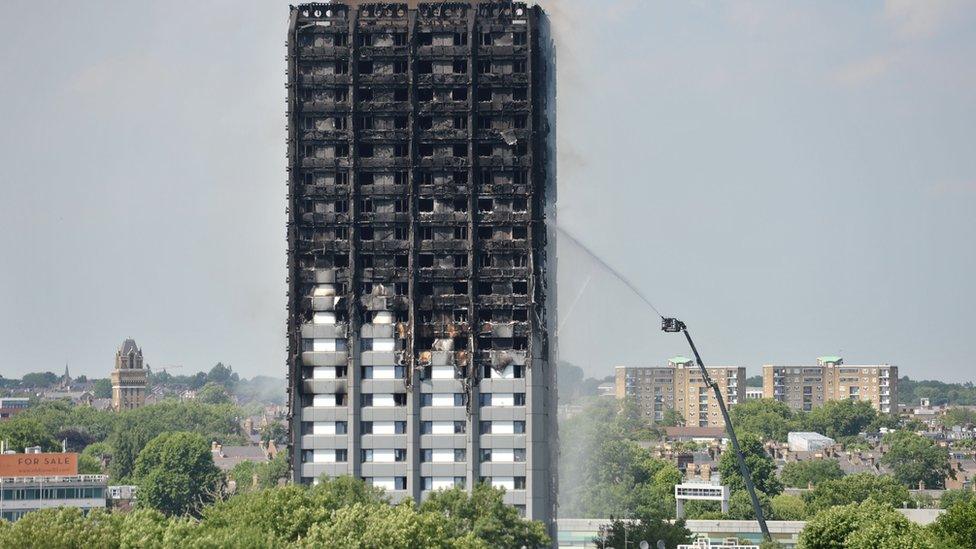Grenfell cladding not on Scots high rise blocks, say councils
- Published

At least 79 people are believed to have died following the fire at the London tower block
No local authority or housing association high rise flats in Scotland have the cladding used in Grenfell Tower, the government has said.
Ministers also revealed 24 out of 32 local authorities reported that no privately-owned high rises used Aluminium Composite Material (ACM).
The remaining councils are said to be investigating "as a matter of urgency".
Cladding is thought to have contributed to the rapid spread of fire at the London tower block.
At least 79 people are believed to have died following the blaze.
Of the eight local authorities yet to provide full information, four are in city areas.
On Friday evening, Camden Council in London announced that more than 800 homes in tower blocks on a council estate were to be evacuated because of safety concerns over cladding.
Local authorities have been sending samples for testing in a bit to identify buildings with cladding similar to that used in Grenfell Tower.
The Scottish government had previously said it was working "intensively" with councils to establish the safety of high rise flats.
In Scotland, cladding put on buildings since 2005 - or added to them since then - is required to be made of fire-proof material.

Angela Constance had asked for more information
Communities Secretary Angela Constance said: "This week, we asked local authorities to give us further information about their high rise domestic buildings.
"They have reported that they have over 500 high rise domestic buildings in their areas.
"All 32 local authorities have advised the Scottish government that no council or housing association high rise domestic buildings have the type of cladding reported to have been used in the Grenfell Tower - Aluminium Composite Material.
"Twenty-four local authorities have also reported to us that no privately-owned high rise domestic buildings have ACM cladding.
"The remainder are completing their investigations as a matter of urgency."
Ms Constance told BBC Scotland's Newsdrive programme that investigations would stretch out to include other public sector buildings.
'Harder job'
She said: "We are working very hard with the eight remaining local authorities to clarify the picture with regards to the private rented sector.
"I think most people would understand that, in terms of the task at hand, it is a harder job for local authorities to check out the private rented sector. It is obviously easier for local authorities to check out buildings that they own.
"But we have spoken to Homes for Scotland and the Scottish Property Federation, who are writing to their members asking them to co-operate with the eight remaining authorities so that we can get to this information as quickly as possible.
"Our first priority, and rightly so, is to seek assurances on high rise domestic buildings.
"But our work will look at different types of buildings and seek to provide assurance to the public with regards to other public sector buildings.
"So inquiries have started with regards to health services; we will indeed wish to look at the situation in our schools because the public will want as much assurance as possible."
- Published23 June 2017

- Published22 June 2017

- Published20 June 2017
